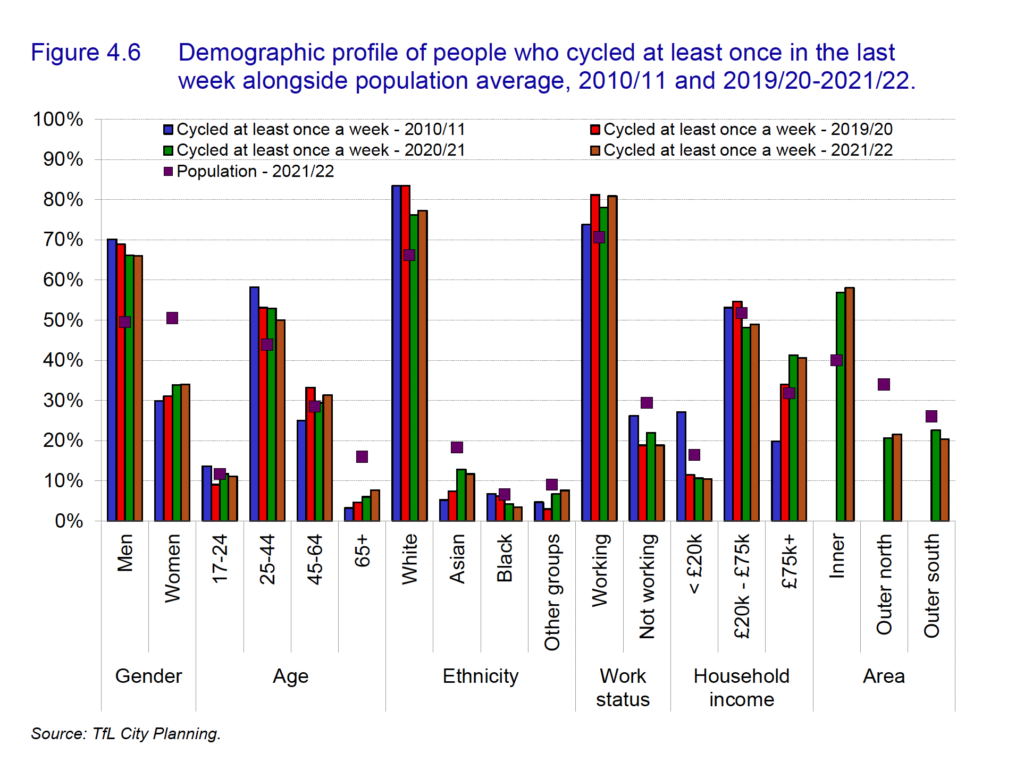LBWF spends millions of public money on cycling, but cannot say whether residents as a whole are getting on bikes, or just the better off
In the past few years, LBWF has spent upwards of c. £30m. on cycling infrastructure, while preaching the virtues of cycling at every opportunity.
Indeed, cycling has become an integral part of the borough’s assiduously promoted self-image, alongside artisan coffee, craft beer, independent shops, and ‘the arts’.
Accordingly, it’s reasonable to ask: is this policy working? Are more people cycling? Have all residents, regardless of background, been equally enthused? And is LBWF collecting enough data to make an accurate reckoning, and thus justify the planned further interventions, for instance, the roll out of new Lower Traffic Neighbourhoods?
These are big questions, and ones which this blog will examine further over the coming months. But it must be said that the initial signs are hardly propitious. Consider the following.
On p.103 of its 2022 Travel in London report, Transport for London presents a graphic at para 4.6 to illustrate who is cycling in the city:
For the veteran journalist Dave Hill of the On London website, what this shows is an ambition unfulfilled.
As he notes, all pro-cycling politicians, from Boris Johnson onwards, have placed great emphasis on getting as wide a spectrum of the population as possible on two wheels, yet after nearly ten years of trying, this simply hasn’t happened.
Rather, as Mr. Hill points out:
‘Cycling in London remains very much the transport choice of people at [the] higher end of the household income scale. They are still also likely to be in the 24-44 age group, far more likely to be men than women, and overwhelmingly more likely to be white than Asian or black’ [emphasis added].
That’s the London-wide picture, but what about Waltham Forest?
To test the water, I recently used the Freedom of Information Act to ask LBWF to forward ‘any data you have which, for the last five years…replicates for Waltham Forest that in Figure 4.6 p.103 of [the Travel in London report]’.
And the answer? LBWF ‘does not hold the information that you requested’.
That’s not good, not good at all.
Residents in Waltham Forest will want to be sure that, given the enormous amounts of public money involved, the push to cycling is not just the creature of the sharp-elbowed affluent, but involves and benefits everyone.
Yet, as things stand, no-one can be certain.

